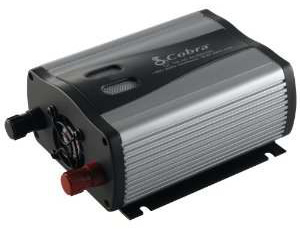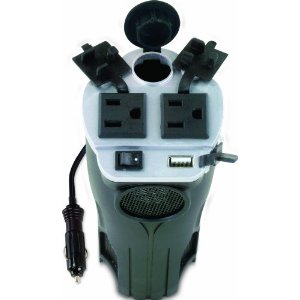These days, we have more devices than ever that are going to require some form of electrical power to run. Aside from the power that we get from our home’s power outlets, we also rely on batteries which have become the primary method of portable power or energy storage. Most of us probably come across a DC to AC converter, also known as a power inverter, on a regular basis and although we have come to take their ubiquity for granted, there is no doubt that they are devices that help keep our modern lives running smoothly. This article takes a look at this very useful device for the benefit of those who may wish to learn more about them. After all, the better we understand the technologies we use, the better position we are going in taking full use of them and maximizing the benefits we get from them.
What a DC to AC Converter Does
Cobra CPI 480 400-Watt 12-Volt DC to 120-Volt AC Power Inverter with 5-Volt USB Output
Modern converters make use of oscillator circuits where semiconductors and transistors play main roles in the conversion process wherein uni-directional (DC) current becomes alternating current (AC) of positive and negative charges at frequencies ranging from 50 to 60 Hz. Some types of converters or inverters produce square shaped waves (e.g. modified sine wave inverters) while others, those that are designed to reproduce the quality of current supplied by utility providers for homes, produce sine wave output that is required by many sensitive appliances like televisions, computers, etc. In most cases, for appliances as simple as a blenders or microwaves, square wave inverters should work just fine.
Using DC to AC Converters
Rally 7413 200W Cup Holder Power Inverter with USB Port
Some of the most popular power inverters are those that are designed for use with cars and car batteries (e.g. car power inverters). In most cases, this kind of power converter is going to be needed when you want to do something in your vehicle, such as charge your cell phone or run your laptop. Some can even power bigger items than that. Picking out the right kind of converter does matter because you want to make sure it fits the device you have in mind by producing enough power (generally measured in terms of watts). Once you have the converter you need, you simply run the DC power into it and then connect it to the device that accepts AC power. It really is that simple, mostly just requiring that you read the directions to make sure you are operating it properly.
Buying Tips
The good news is that these devices are highly available everywhere electrical supplies stores are round. This is going to make it relatively simple for you to pick the right one for your needs. You can also get them through the web since a number of specialist retailers do offer them and can ship them straight to your door. Perfect sine wave inverter should be more expensive than square or modified sine wave inverters so be sure to get your specs right before shelling out money. Don’t buy sine wave inverters if a square wave will suffice. When in doubt, ask your electrician!
Read Related:
One Response to “A Basic Look At The Ubiquitous DC To AC Converter (a.k.a. Power Inverter)”
Read below or add a comment...
Sirs!
Question! Do ya’ll have available any DC to AC inverters that have a 220vac output?
If so, I’d like information cocerning these as to availabilty and cost.
Thank you.
Vaughn Keffer